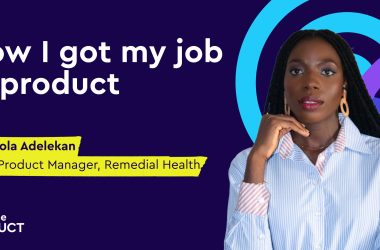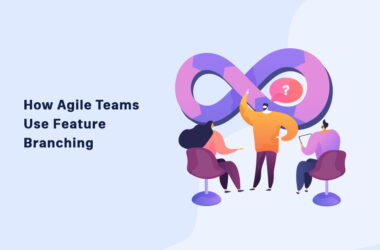Stepping into your first product leadership role is a major change. As an individual contributor, you’re focusing on your own projects and progress, but as a leader you are now responsible for the team (or teams) that report up to you.
You may find yourself less involved in the day-to-day work of discovery and delivery and more focused on higher-level strategy. And it might feel a bit lonelier than when you were an active member of a product trio.
We often hear about this transition from members of the Continuous Discovery Habits community who are new to leadership roles and either write in with questions or step in to share their experiences.
For this edition of Product in Practice, we’ve collected stories from a few of these new product leaders who turned to the Continuous Discovery Habits community for advice and inspiration. You’ll hear from Trevor Acy, who needed to balance time for learning with bias for action and Iryna Melnyk, who saw how the opportunity solution tree could help her think through some of the challenges she was facing as a product leader.
Do you have a Product in Practice or success story from the Continuous Discovery Habits community you’d like to share? You can submit your story here.
Trevor Acy, Balancing Time for Learning and Bias for Action
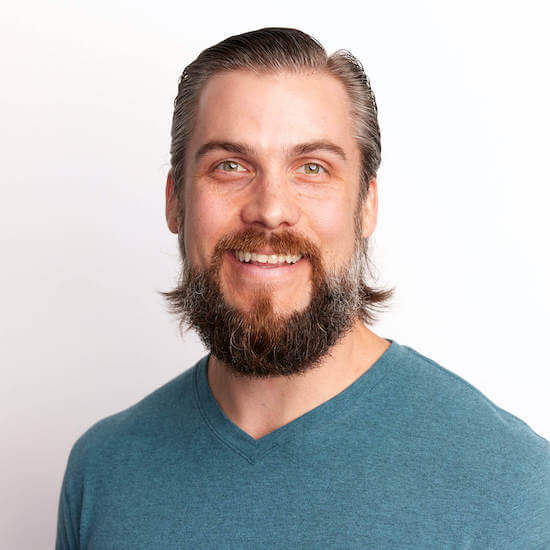
Meet Trevor Acy, the Associate Director of Product Management at Ramsey Solutions.
Trevor Acy is the Associate Director of Product Management at Ramsey Solutions, where he started working in 2015 and moved into his current role in June 2022.
As a new(ish) product leader, one of the biggest challenges Trevor faced was convincing other leadership how much time the product team needed for discovery. Trevor explains, “The leadership team felt like discovery was ‘taking too long.’ And at first it was just a general sentiment and the advice to the squads—specifically the product trios—was to go faster. But that wasn’t very helpful.”
To translate this into more useful advice (and think through how to respond to leaders who were asking product teams to go faster), Trevor spent time mapping out which opportunities would allow them to move more quickly. “The list got pretty long quickly—like 20 issues,” says Trevor. “Some had to do with the team members, some had to do with our processes, some had to do with leadership meetings, and some were just the environment we were operating in. But once we identified those, we could pick the largest issue and work through them.”
Turning to the CDH Community for Help
Trevor decided to turn to the CDH community to get their take on this topic. He asked the community how to determine when a trio should run through the entire pattern of identifying and testing assumptions vs. building something quickly to learn. He explains that while he agreed with the leadership that the process should be faster, he also felt like he had a new product manager, a newly formed product trio, and they were squarely in the learning phase, so it was naturally going to take them time to get up to speed.
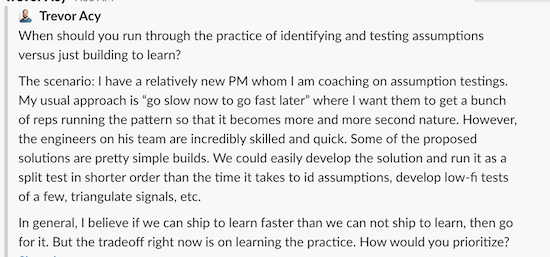
Trevor turned to the CDH community to get their take on identifying and testing assumptions vs. building to learn.
“But that’s not a very good answer to a leadership team—that learning is slow,” says Trevor. Through conversations with his engineering director, he began to realize that some things they were choosing to pursue were pretty straightforward. “If the purpose of assumption testing is to mitigate risk, some of these things that we were pursuing had almost no risk in them anyway. There were two-way-door decisions that we could quickly undo, and there wasn’t a lot of dollars or customer pain. There were just things that we thought would make the experience better, optimize or iterate on, but they weren’t really risky things.”
Another tension Trevor was experiencing was the desire to find a simple example to help his team learn. “It’s harder to learn in a really complicated example when you’re learning it for the first time. Yes, we could build it today and ship it today, but it’s also a good use case for taking a simple example to run it through the pattern.”
It’s harder to learn in a really complicated example when you’re learning something for the first time. – Tweet This
So Trevor asked the community about how to balance the need to learn and the desire to move quickly. “I got lucky and that was one of the questions that Teresa responded to directly,” says Trevor. Teresa’s response? She gave a typical product answer: “It depends.” But she also indicated that just because you can build something quickly doesn’t always mean that you should build it. “You could build 30 wrong things that were just faster to build or you could spend a couple of weeks on discovery and identify some right things to build,” she wrote. Essentially, the idea of continuous discovery is to move away from having teams build ideas to test them.
You could build 30 wrong things that were just faster to build or you could spend a couple of weeks on discovery and identify some right things to build. – Tweet This
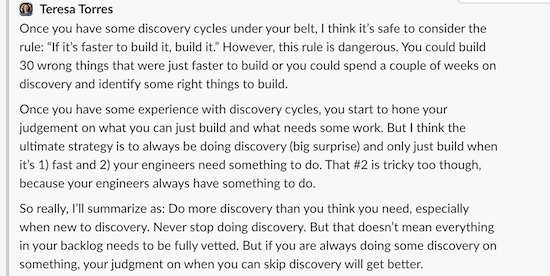
Teresa responded to Trevor to say doing more discovery than you think you need, especially when you’re new to discovery.
Trevor took the screenshot of Teresa’s response and shared it with the leadership team, saying, “I asked for some guidance. And I agree that it’s okay to do every now and then. But it’s definitely not a habit that we want to create. I don’t want us to come back and say, ‘Why don’t we just do this build to test thing?’”
In retrospect, Trevor says this question has turned into two learning opportunities: One for the leadership team and one for the product trio that he was coaching. The trio got to discuss how they wanted to decide when to fully assumption test vs. when to simply place the bet and see.
It was also a way to say, “We’ve got permission to try riskier things because we are putting this process in place. So let’s think bigger and bolder in our solutions because we are going to mitigate those risks by running it through this pattern as opposed to the existing mental model of, ‘We can’t try anything too risky because we’re going to build it and see and we don’t want it to blow up.’”
Next Steps and Results
Trevor says that they were able to find a good balance of allowing the product trio to continue down the riskier path while giving engineers more straightforward solutions to pursue. They continue to gather feedback from their tests and weigh and make decisions.
Reflecting on what they’ve learned so far, Trevor says adopting continuous discovery habits has been a game-changer. “It provided permission to think bigger in terms of what solutions they could propose and test. And we’re running something now that has everyone a little nervous—which is where I like to play. Our goals are aggressive, so we’ve got to try bigger things and make bigger changes if we want bigger results. It’s given us permission to do that and it’s also given the leadership team confidence in pursuing that stuff. We’ve put it through the rigor of assumption testing and some results came back with much stronger signals. It feels big and scary because it’s such a big departure from our previous experience, but the evidence that we have is saying it doesn’t seem like that big of a deal. It’s been a fun evolution and it’s allowing us to get a little bolder in the changes we’re making to our product.”
Regarding whether the leaders are satisfied with the pace of the product team’s progress, Trevor laughs, “To the extent that leaders can be. They always want bigger, better, faster, stronger. But as we’ve talked through the process more, we’ve created better understanding that it does take more time. It is slower than simply deciding to build. So there have been healthy conversations about what to keep teams engaged with in the meantime while also speeding up this process.”
Some of the ways they’ve been approaching this is by lowering the fidelity and criteria of some of their tests. And the results have also helped make the case for this way of working. “As we’ve seen those results, we’ve gotten more and more trust in the process. The metrics are moving. Where their current outcome is, the contact rate that was hovering between 30 and 32 percent last quarter, the last three consecutive weeks, it’s been 38, 40, 42 percent. As you get results, you gain a lot more trust and people start seeing that maybe there is something to this process, so they’re willing to keep doing it.”
As we’ve seen results, we’ve gotten more and more trust in the continuous discovery process. The metrics are moving. – Tweet This
Iryna Melnyk, Using the Opportunity Solution Tree to Address Leadership Challenges

Meet Iryna Melnyk, Product Director at Octopus Deploy.
Iryna Melnyk is the Product Director at Octopus Deploy, her first role that involves leading product managers.
While Iryna didn’t have a specific question in mind like Trevor, she says she’s been looking for ideas and inspiration and she’s been surprised by the lack of relevant information for product leaders—especially in comparison to the amount of content for product managers and engineering leaders. “Part of my challenge is how little is out there for a person in my role, for the kind of middle manager who is the leader of other product leaders.”
So Iryna had just generally been looking for sources of inspiration for her product leadership journey and trying to gather resources that she might reference in the future when someone in her organization has a question or faces a specific challenge.
An Aha Moment in a CDH Community Call
As a member of the CDH community, Iryna joined one of the community calls where Teresa had invited Amy O’Callaghan to discuss some of the ways she’s used opportunity solution trees (including to manage the “messiness” of life—a topic we recently covered here on the Product Talk blog). Iryna also remembered that Teresa had mentioned that she teaches the opportunity solution tree framework to executives (from disciplines other than product) in her class at Northwestern.
“I didn’t straightaway think, I’m going to go ahead and do that there and then,” says Iryna. “But I think that idea inspired me to think about what is my product? It’s people. And how do I get outcomes? It’s by investing in my teams.” Additional conversations with her manager led Iryna to really focus on this idea of treating her team like a product.
What is my product? It’s people. And how do I get outcomes? It’s by investing in my teams. – Tweet This
She started asking, “What do me and my peers need as leaders of the group? What do our stakeholders and senior leadership need out of our group?” The answer she came up with: consistently delivering impactful work for the customers and for the business.
So Iryna began mapping out an opportunity solution tree with the outcome “teams are set up to win.”
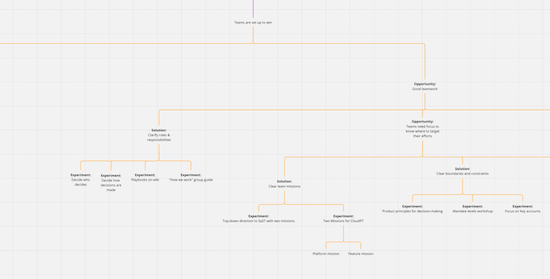
Iryna realized the opportunity solution tree could help her focus on the outcome of setting product teams up to win.
Tackling a Specific Challenge: Celebrating Wins from the Platform Team
Drilling down into one specific example, Iryna says it was important for product teams to sustainably deliver value, which related to making all work visible.
“A few months ago, we realized that our platform team spends the majority of their time on operations and keeping our services running. And quite a bit of that work was invisible. We saw that the team was getting a lot of important things done, but when they shared their plans or when they shared reflections on how their quarter went, all that was difficult to interpret to readers outside the team.”
Iryna continues, “Operations is one of those things that you only notice when it goes wrong. But we wanted to call out and celebrate maintaining uptime and responding to incidents very, very quickly.”
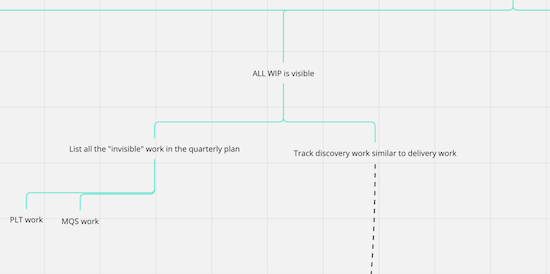
Iryna identified the opportunity “All WIP is visible” and realized this wasn’t exactly the case for the platform team.
To address this, Iryna created the opportunity “All WIP is visible” on her opportunity solution tree and began mapping out potential solutions, such as listing all the “invisible” work in the quarterly plan and tracking discovery work similar to delivery work.
Next Steps and Results
One solution Iryna identified was including this information in quarterly planning documents. “We made sure that all the work is visible. We share that things work as expected, uptime is good, and incidents are managed and responded to—this is the first thing we want people to see.”
This information is now called out at the top of the R&D level to celebrate how the quarter went. Iryna says leadership has been supportive, but to give the team even more recognition and visibility, they’ll experiment with presenting at the R&D all hands and let the platform team tell the story of their work and its impact.
Overall, Iryna has gotten positive feedback from her peers or from leadership around her thoughtful, deliberate approach to decision-making. “I think it’s the forcing function of an opportunity solution tree that makes thinking a lot more clear and lets you verify your thinking with others and improve it,” says Iryna.
I think it’s the forcing function of an opportunity solution tree that makes thinking a lot more clear and lets you verify your thinking with others and improve it. – Tweet This
Key Learnings and Takeaways
Trevor finds that the key to being a good leader involves two core themes: building trust with your stakeholders or leaders and helping your team to grow into their responsibilities.
When it comes to building trust with stakeholders, Trevor says, “It may seem counterintuitive or even antithetical to Continuous Discovery Habits, but out of the gate, simply care more about what they care about than they do. Don’t try to change things immediately. Just go get the results that they want.”
Similarly, you need to understand your business model. “It is impossible to map product outcomes to business outcomes if you don’t understand how your business works and makes money. Besides being a customer expert, you have to be a business expert, too.”
At the same time, Trevor says a good leader doesn’t simply set goals and make the plans to achieve those goals. “That’s a contributor’s responsibility and not where I can be most impactful as a leader. My job is to create aha moments and unlocks for team members to achieve more than they thought they could. It’s to grow them into more responsibilities.”
My job is to create aha moments and unlocks for team members to achieve more than they thought they could. It’s to grow them into more responsibilities. – Tweet This
Trevor admits that this isn’t easy: “There’s a lot of ego and pride you have to let go of if you want to be an effective leader that people want to work with. Their success is more important than yours. And you have to genuinely want that. If leadership is about you, then leadership is not for you.”
Reflecting on her experience, Iryna says the opportunity solution tree has helped her to focus on the most impactful opportunities and not get distracted: “The reality of anyone in the product role and anyone in the leadership role is that there’s always a lot of things to do. No matter which stage your product is in, no matter which stage your organization is in—especially if you’re a proactive and ambitious person—you will see all these little fires or all these exciting shiny opportunities. And for me naturally, I’m very tempted by trying to do it all. So the opportunity solution tree is an amazing tool to try to have more focus and then look back on what you tried and recognize what worked and what didn’t work.”
The opportunity solution tree is an amazing tool to try to have more focus and then look back on what you tried and recognize what worked and what didn’t work. – Tweet This
Similarly, she appreciates how it gives you an opportunity to celebrate your team’s progress. “It’s a celebration tool as well. Like, ‘Hey, that used to be something that was really top of mind six months ago or a year ago and look how far we’ve come, now we can focus on this other thing.’”
When it comes to advice for other leaders, Iryna recommends taking the approach of treating your organization and your team as your product, just as her manager advised her to do. Like Iryna, you can build out a well-functioning product organization opportunity solution tree and get input from your peers, stakeholders, and senior leadership to prioritize your main and secondary focus areas.
And be realistic about how much you can take on at once. “Trying to work on culture, hiring, people, practices, systems and tools, and strategic direction all at once does not work. Think about what is good enough or led by someone else for now vs. what will break if you don’t prioritize it now,” says Iryna.
On a more tactical level, she also suggests getting Petra Wille’s book STRONG Product People, reading it, and keeping it on your desk for quick reference in day-to-day situations.
Trevor and Iryna both turned to the CDH Membership for help when they needed it. So can you. Come join us!
The post Product in Practice: Stepping Into Your First Product Leadership Role—What to Expect appeared first on Product Talk.
Product in Practice: Stepping Into Your First Product Leadership Role—What to Expect was first posted on October 25, 2023 at 6:00 am.
©2022 “Product Talk“. Use of this feed is for personal non-commercial use only. If you are not reading this article in your feed reader, then the site is guilty of copyright infringement. Please let us know at support@producttalk.org.



